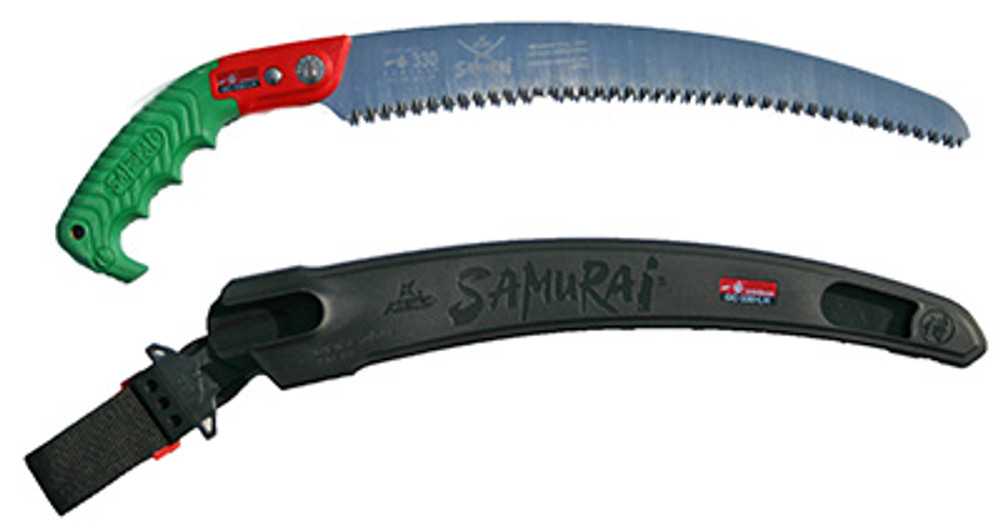Samurai ICHIBAN Curved Pruning Saw w/ Scabbard, GC-330-LH
Add to WishlistThe GC-330-LH 13" saw offers the latest in both blade and handle technology, the precision toothing refers to the angle of the teeth along the length of the blade. The unique design, only associated with Samurai, optimizes the cutting performance throughout the pull stroke cutting action, making this saw probably the most efficient, user friendly saw currently available in the world. The GC saw has justly earned the Japanese name ICHIBAN meaning number 1.
IMPULSE HARDENED TEETH
The blades are subjected to precision controlled electronic impulses which heat and harden only the cutting edge of each individual tooth, making sure the razor sharp cutting edge stays sharp cut after cut. This hardening process makes Samurai blades last three times longer than a conventional blade.
ERGONOMIC HANDLES
The computer designed handles are based on human engineering principles and are covered with a rubber compound to prevent slipping. The special curvature of the handles reduces the effort when cutting, making it possible to cut harder materials effortlessly. The notched end of the handles reduces the chance of dropping the saw on the pull stroke when loosely held.
General Pruning Saw Information:
The two common blade profiles are "tapered" and "non tapered." The tapered blade is thicker at the bottom where the teeth are and thinner at the top following edge. On a tapered blade the teeth do not have "set" (pushed left and right) therefore the blade following the teeth must be thinner to prevent drag in the saw kerf. A non-tapered blade has the same thickness from the top to the bottom. The teeth on a non-tapered blade have "set" to create a wider kerf at the teeth so the remaining blade can follow through the cut without drag. Typically a "non tapered" blade is more rigid than the tapered blade.
Tooth Style - The three sided or tri-edge tooth has edges on both sides and across the top of the tooth. This style tooth cuts much faster then the conventional two sided tooth. The advantage of the conventional two sided tooth is it is easier to sharpen.
Teeth per inches - refers to the number of saw teeth in one running inch of saw blade. The smaller the number of teeth per inch the "coarser" the blades is. A blade with a higher number of teeth per inch is described as a fine tooth blade.
Hardening - Impulse hardening is the most common method for hardening saw teeth. The process involves using electrical impulses to create a very hard layer on the saw tooth edge. The advantage of impulse hardening is a much longer tooth life. The disadvantage to of an impulse hardened tooth is it cannot be sharpened.
Mount - Many saw blades are punched with two different mounts (hole patterns) to allow one blade to serve as a pole saw blade and at the same time a replacement blade for its respective hand saw. This "Dual" mount allows tree service professional to order just one blade for both uses."
There are no reviews yet.
Leave a Review

